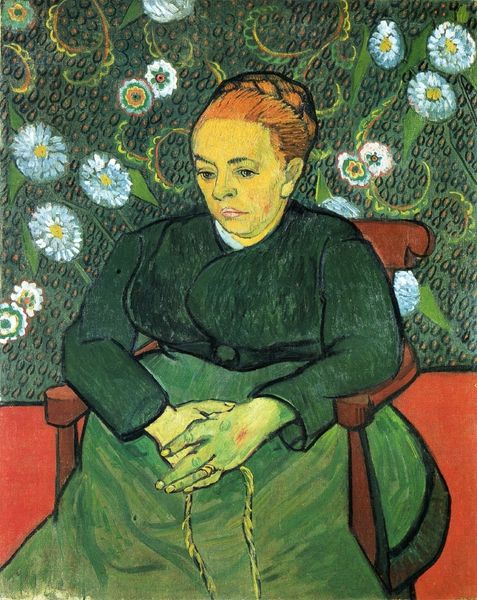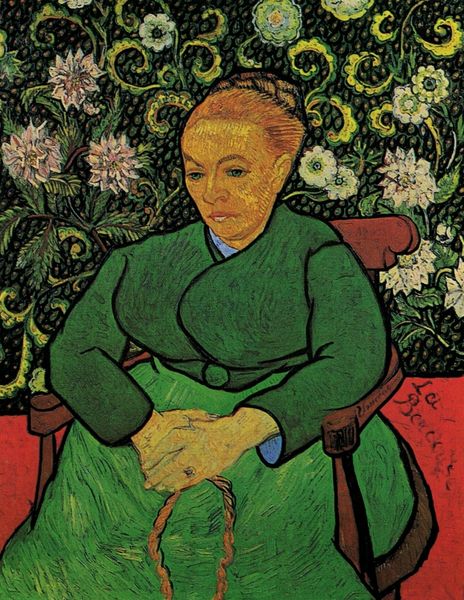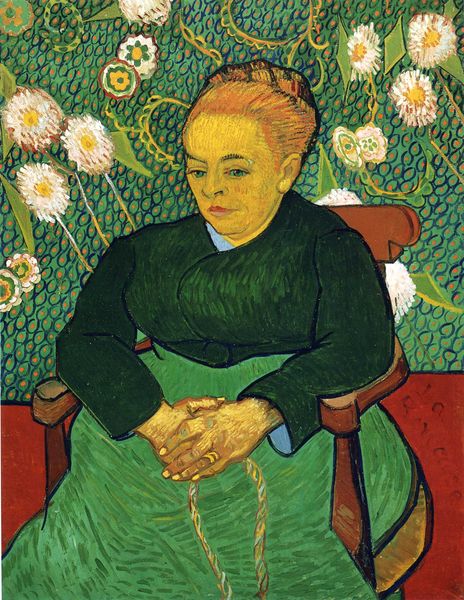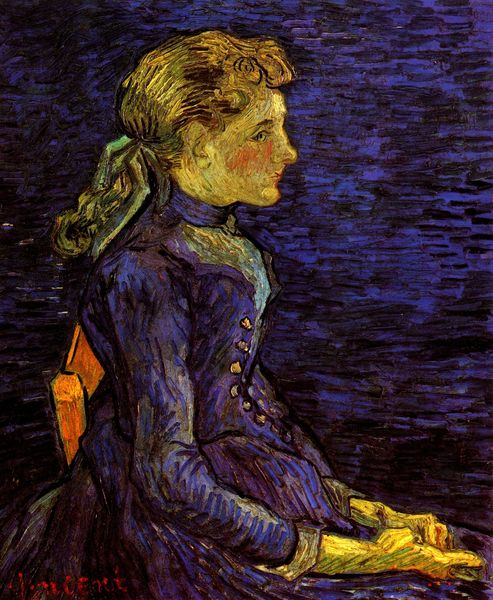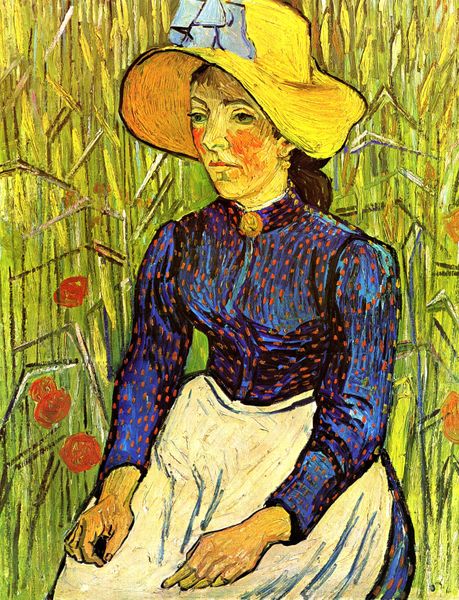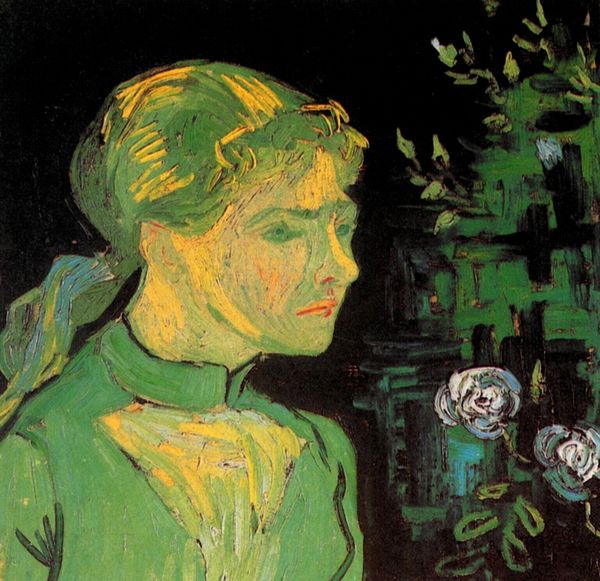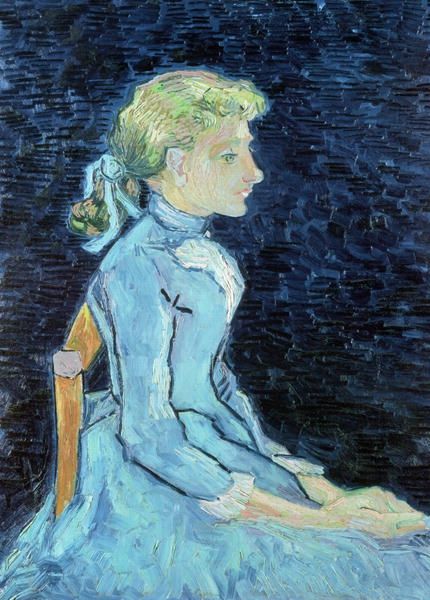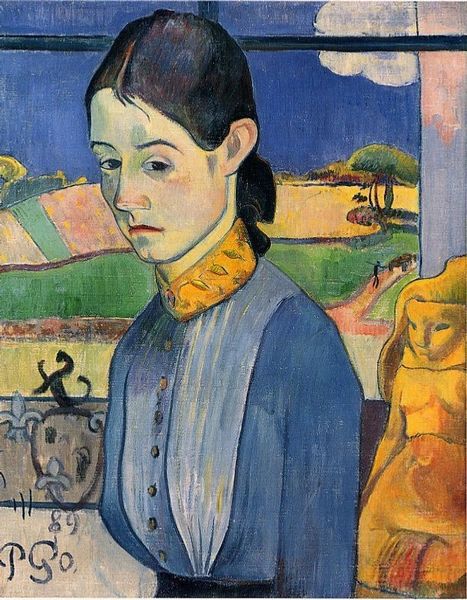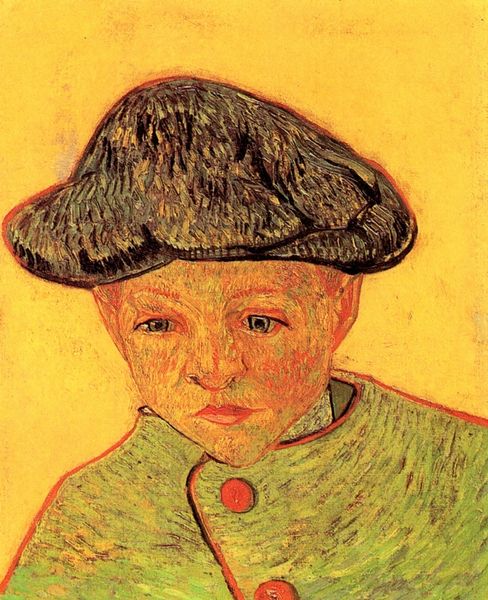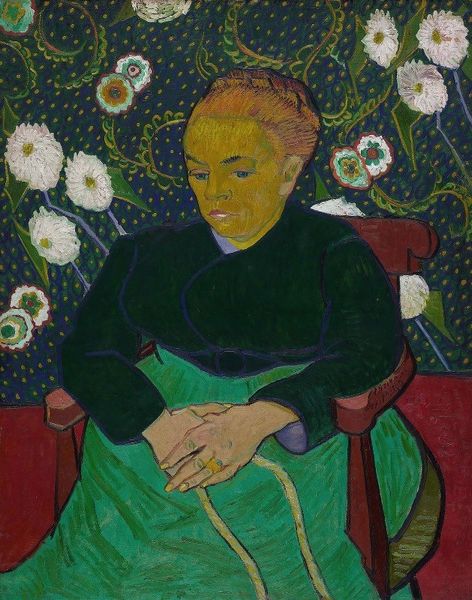
painting, oil-paint, impasto
#
portrait
#
painting
#
oil-paint
#
oil painting
#
impasto
#
post-impressionism
#
portrait art
#
modernism
Dimensions: 51 x 49 cm
Copyright: Public domain
Curator: Here we have Vincent van Gogh’s "The Little Arlesienne," an oil painting from 1890. It resides here at the Kröller-Müller Museum in Otterlo. Editor: It’s strikingly somber. The colors are quite muted, yet that patterning behind her is almost aggressively cheerful, no? Curator: That contrast is deliberate. Van Gogh often used color and composition to convey emotional states. He was working on the psychology of portraits, tapping into sitter's interiority through surface elements. Editor: Speaking of surface, the impasto technique is so evident here. You can really see the texture of the paint, the labor of applying it. And how that contrasts with her plain dress - there's no gilding the lily, so to speak. It really strips away the traditional markers of status. Curator: The "Arlesienne" series, it's crucial to note, comes out of a particular socio-political landscape. He painted these in the asylum at Saint-Rémy, drawing on memories and imagination rather than direct observation for some. This wasn’t a commission from a wealthy patron; it's Van Gogh’s own exploration of character, absent any requirement to flatter his subject. Editor: The sitter, with that sort of sad acceptance in her posture... what do we know about her? Was she actually from Arles? Curator: She represents an archetype, not necessarily one individual. The women of Arles were seen as particularly stoic, enduring. But he’s also riffing on classical art—drawing inspiration from the poses and garments of the women of ancient Greece and Rome. Editor: It’s a fascinating example of how the materials, even just the humble application of the paint, become integral to the reading. It speaks of accessibility, both of subject and process, for the viewer, too. Curator: I agree. And within a growing culture of commercial portraiture, he reclaims the portrait for a purpose. It's meant to spark contemplation, rather than just affirm social status. Editor: Exactly. He's digging at labor, materiality and a social commentary that resists being pinned down to a straightforward narrative. Fascinating. Curator: It gives us so much insight into how social and economic forces are subtly embedded in even the most seemingly personal portrait.
Comments
No comments
Be the first to comment and join the conversation on the ultimate creative platform.
